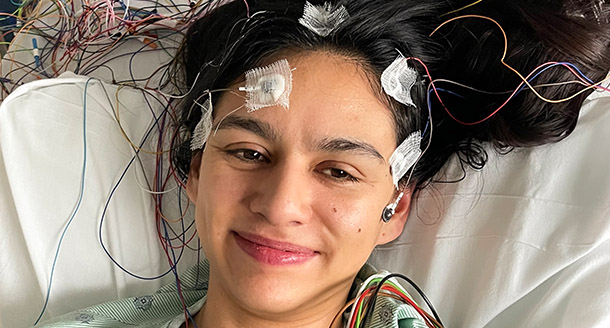Ibrutinib inactivates BMX-STAT3 in glioma stem cells to impair malignant growth and radioresistance
Shi Y, Guryanova OA, Bao S, et al (2018) Science Translational Medicine DOI: 10.1126/scitranslmed.aah6816
> View the paper
Abstract
Glioblastoma (GBM) is the most lethal primary brain tumor and is highly resistant to current treatments. GBM harbors glioma stem cells (GSCs) that not only initiate and maintain malignant growth but also promote therapeutic resistance including radioresistance. Thus, targeting GSCs is critical for overcoming the resistance to improve GBM treatment. Because the bone marrow and X-linked (BMX) nonreceptor tyrosine kinase is preferentially up-regulated in GSCs relative to nonstem tumor cells and the BMX-mediated activation of the signal transducer and activator of transcription 3 (STAT3) is required for maintaining GSC self-renewal and tumorigenic potential, pharmacological inhibition of BMX may suppress GBM growth and reduce therapeutic resistance. We demonstrate that BMX inhibition by ibrutinib potently disrupts GSCs, suppresses GBM malignant growth, and effectively combines with radiotherapy. Ibrutinib markedly disrupts the BMX-mediated STAT3 activation in GSCs but shows minimal effect on neural progenitor cells (NPCs) lacking BMX expression. Mechanistically, BMX bypasses the suppressor of cytokine signaling 3 (SOCS3)–mediated inhibition of Janus kinase 2 (JAK2), whereas NPCs dampen the JAK2-mediated STAT3 activation via the negative regulation by SOCS3, providing a molecular basis for targeting BMX by ibrutinib to specifically eliminate GSCs while preserving NPCs. Our preclinical data suggest that repurposing ibrutinib for targeting GSCs could effectively control GBM tumor growth both as monotherapy and as an adjuvant with conventional therapies
Minimally Invasive Resection of Deep-seated High-grade Gliomas Using Tubular Retractors and Exoscopic Visualization
Iyer R, Chaichana KL (2018) Journal of Neurological Surgery Part A DOI: 10.1055/s-0038-1641738
> View the paper
Abstract
BACKGROUND AND STUDY AIMS/OBJECTIVE: Deep-seated high-grade gliomas (HGGs) represent a unique surgical challenge because they reside deep to critical cortical and subcortical structures and infiltrate functional areas of the brain. Therefore, accessing and resecting these tumors can often be challenging and associated with significant morbidity. We describe the use of minimally invasive approaches to access deep-seated HGGs to achieve extensive resections while minimizing surgical morbidity.
MATERIALS AND METHODS: All patients who underwent resection of a deep-seated intraparenchymal HGG with the use of a tubular retractor with exoscopic visualization from January 2016 to May 2017 were identified prospectively at a single institution. Variables evaluated included tumor location, pre- and postoperative neurologic function, extent of resection, and length of hospital stay.
RESULTS: Overall, 14 patients underwent resection of an HGG (11 glioblastomas, 3 anaplastic astrocytomas) with a tubular retractor under exoscopic visualization. Seven tumors (50%) involved the thalamus, three (21%) the motor corticospinal tract, two (14%) the inferior frontal occipital fasciculus, one (7%) each the basal ganglia and optic pathway. The median preoperative Karnofsky Performance Score (KPS) was 70 (interquartile range: 55-80), where the major presenting symptom was motor weakness in seven (50%). The average plus or minus the standard error of the mean percentage resection was 97.0 ± 1.2%. The median hospital stay was 4 days (range: 2-7). At 1 month postoperatively, median postoperative KPS (within 30 days) was 87 (range: 77-90), where eight (57%) were improved, five (36%) were stable, and one (7%) was worse postoperatively.
CONCLUSIONS: Deep-seated HGGs can be accessed, visualized, and resected using tubular retractors and exoscopic visualization with minimal morbidity.
If you’d like to support innovative brain tumor research, please consider making a gift.




